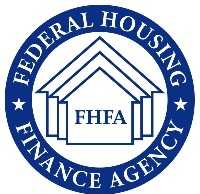Housing Bubble Recovery: Will The Next 12 Months Show Signs of Life?
WASHINGTON, D.C. – February 25, 2013 – (RealEstateRama) — There seems to be a sliver of hope for the real estate market in the U.S. According to the National Association of Realtors, median sales price in January for previously-owned homes has risen 12.3 percent annually. This is the strongest gain in over seven years and the 11th consecutive month of annual increases. Primary reasons for this gain in price are thought to be a low inventory and an inflow of investors with enough money to heat up the bidding markets. There has also been an increase in the number of traditional sales rather than foreclosures and short sales. The number of distress sales in January has come down to 23 percent of all sales from 35 percent a year ago.
Mixed Opinions
The gains are more evident in places like Las Vegas and Phoenix which were hit hard when the bubble burst. There are two schools of thought with opposing views about what these gains might translate into. The fact that the steepest price hikes are in these same cities has set the alarm bells ringing for some analysts. Home prices have increased by 22 percent in Phoenix and 10 percent in Las Vegas in a period of 12 months. This has led to concern that this might be a short-term trend and could lead to a repeat of the housing crash. On the other hand are the economists who say that such gains are not at all worrisome especially given the number of homeowners who are still underwater. Laura Sebastian is a real estate credit consultant. Her capacity with rent to own real estate service HomeStarSearch affords her a ground-level perspective with prospective homebuyers. She offers that “despite modest gains in January, the forecast for home sales seems promising given the fact inventories are low and prices are rising sharply.”
Falling Vacancy Rates
Yet another indicator of better times to come is the dip in vacancy rates. Fewer homes are lying empty while the vacancy rates of 1.9 percent in terms of homeowner housing and 8.7 percent for the rental housing market is a far cry from the 2.9 percent and 11.1 percent, respectively, seen a couple of years ago. Low vacancies are being reported from across the nation and are not restricted to any particular region or city.
States such as Florida, Georgia, Arizona, Ohio, and Michigan, which took a beating when the housing bubble burst are all reporting decreases in vacancy rates. “If this continues, it’s very likely that we will see an increase in construction of rentals as well as owner-occupied units,” adds Sebastian. The National Association of Home Builders (NAHB) has reported that confidence among home builders has slipped a bit in February compared to the highs in January. However, this has been primarily attributed to shortage of workers in many places as well as higher costs of construction and financing. “Since the decline in new homes has been greater in the Midwest and Northeast than the West and South, the weather is likely to be the culprit,” reasons Sebastian.
A Complex Picture
There are plenty of indications that the U.S. housing market is limping back to normalcy after stagnating for about five years. But the U.S. economy may not be improving though overall with the unemployment numbers moving back upward and the American economy retracting according to the latest quarterly report. This may mean there could be some outstanding deals for home buyers if home prices begin to decline again. Currently though, there is some extremely low mortgage rates which has helped spur home purchasing. The home-buying season usually begins in spring and so March-May are set to be the crucial months which might provide a clearer picture of things to come.














